The Nasrid Palaces: The Jewel Of The Islamic Art Of The Alhambra Of Granada
The Alhambra, located in Granada, Spain, is one of the most breathtaking places you can visit.
This palace and fortress complex sits on a hill, offering a stunning view of the city and the nearby Sierra Nevada mountains.
Its name comes from the Arabic word “Al-Ħamrā'” which means “The Red Fort.”
The Alhambra is a masterpiece of Moorish architecture and a symbol of Spain’s rich history of Muslim and Christian rule.
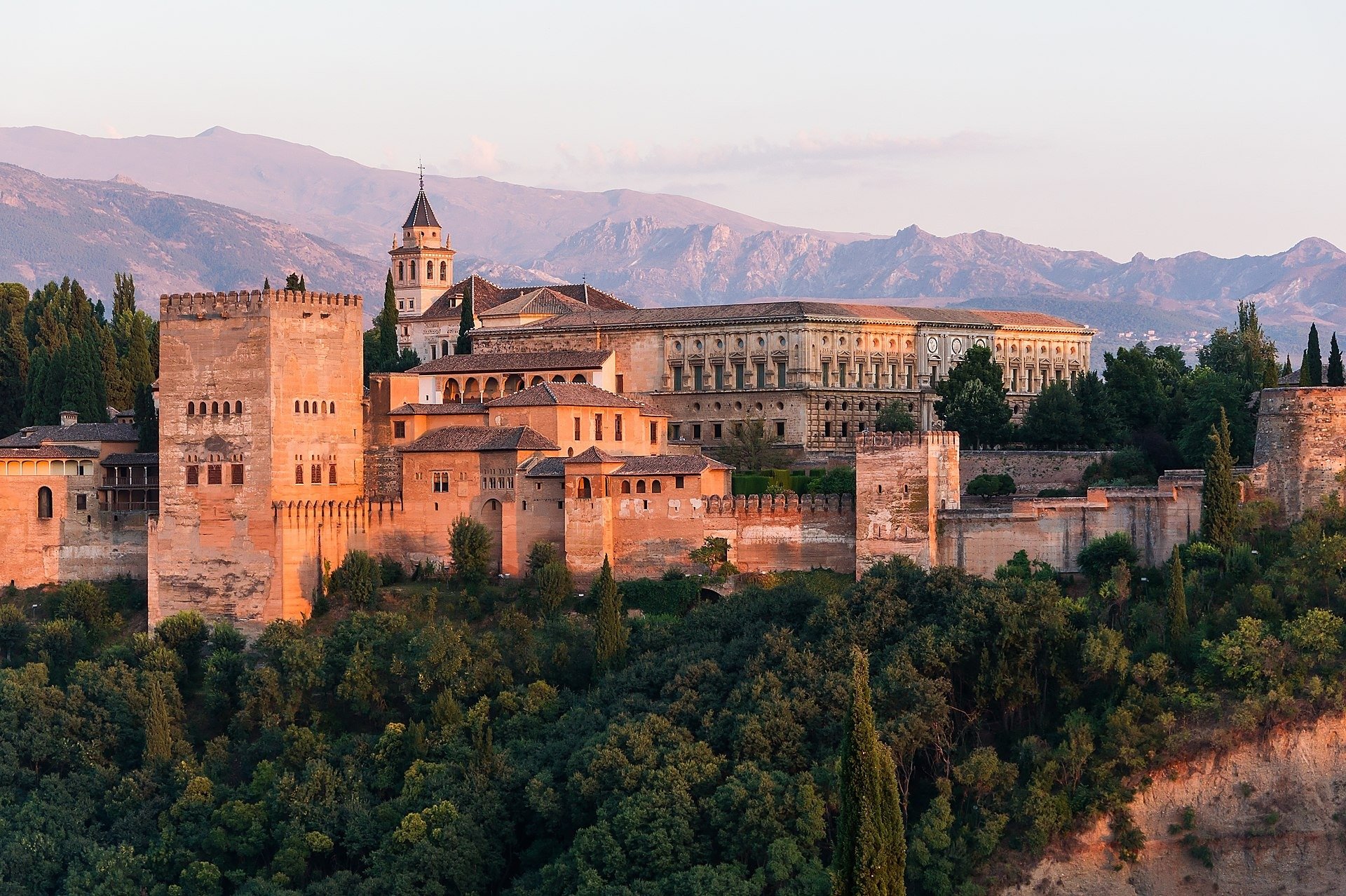
A Fortress Full of History
The Alhambra was originally built in the mid-14th century by the Moorish rulers of Granada.
For many years, it served as the royal residence and the heart of Muslim rule in southern Spain, which was then known as Al-Andalus.
This fortress was their stronghold for over 700 years.
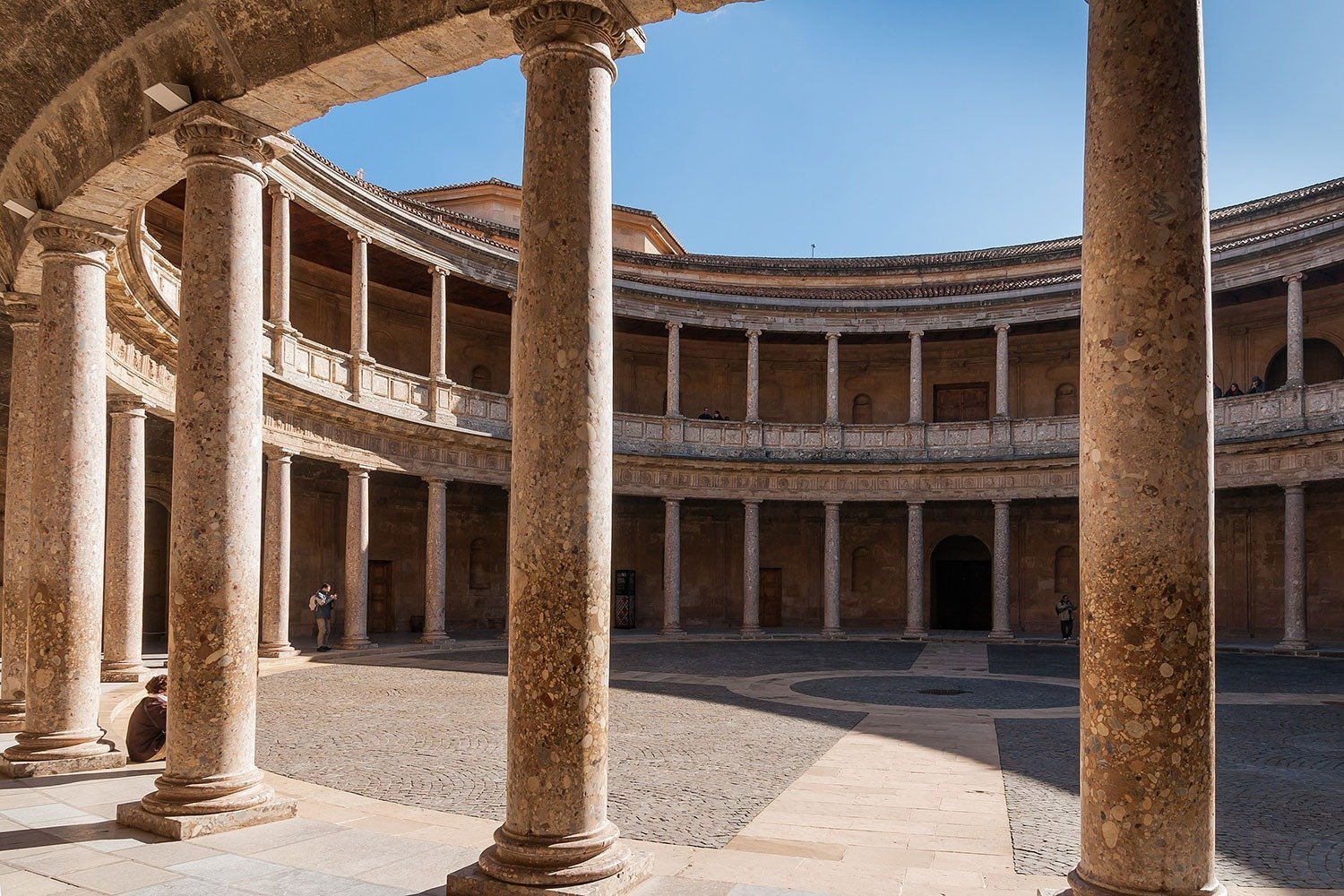
However, in 1492, King Ferdinand and Queen Isabella of Spain took control of Granada, marking the end of Muslim rule in Spain.
Interestingly, the Alhambra itself was never attacked, and it became part of Christian Spain without damage.
One of the notable additions to the Alhambra after the Reconquista was the Palace of Charles V.
Built in 1527, the palace stands as a reminder of the Christian victory over the Moors.
Its design, a Renaissance structure right in the middle of a Moorish complex, seems like a statement of conquest.
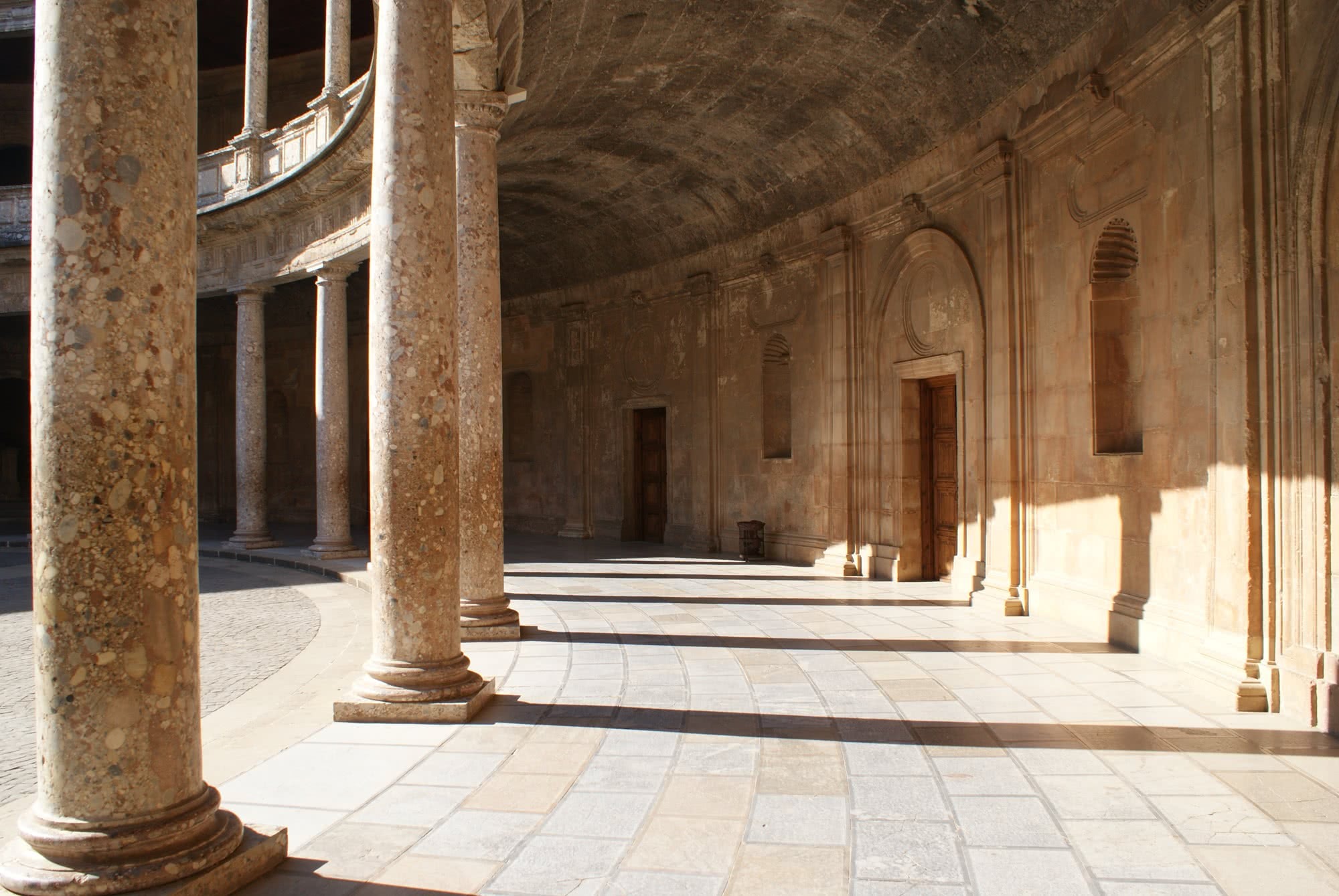
A Blend of Art and Culture
The Alhambra is a perfect example of Moorish artistry, blending intricate designs with beautiful architecture.
As you walk through the palace, you’ll notice detailed carvings, patterned tiles, wooden ceilings, and filigree windows.
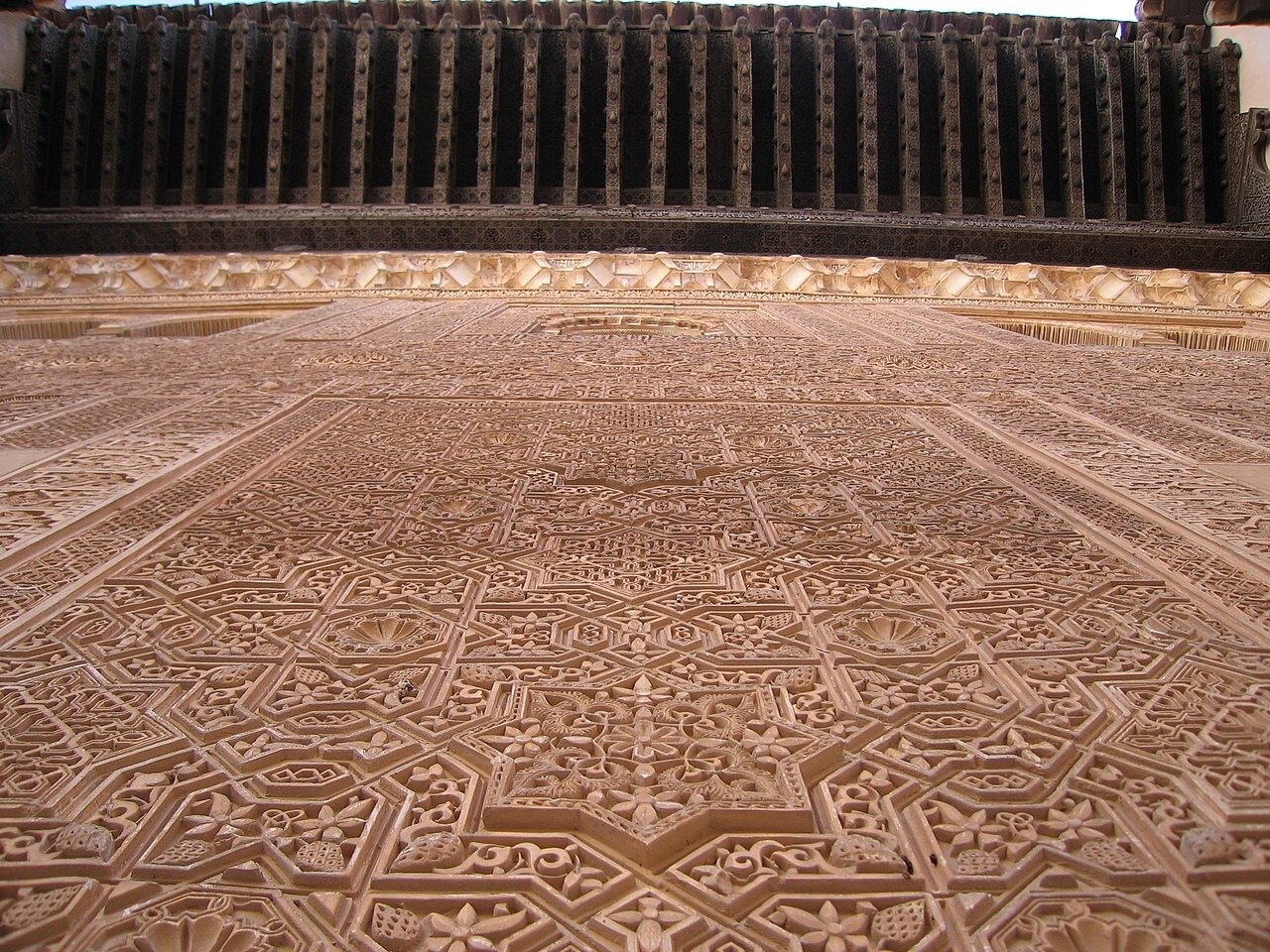
The Moorish love for beauty is visible everywhere, especially in their use of water.
Water was a precious symbol of life for the Moors, and throughout the Alhambra, you will find fountains, pools, and trickling streams.
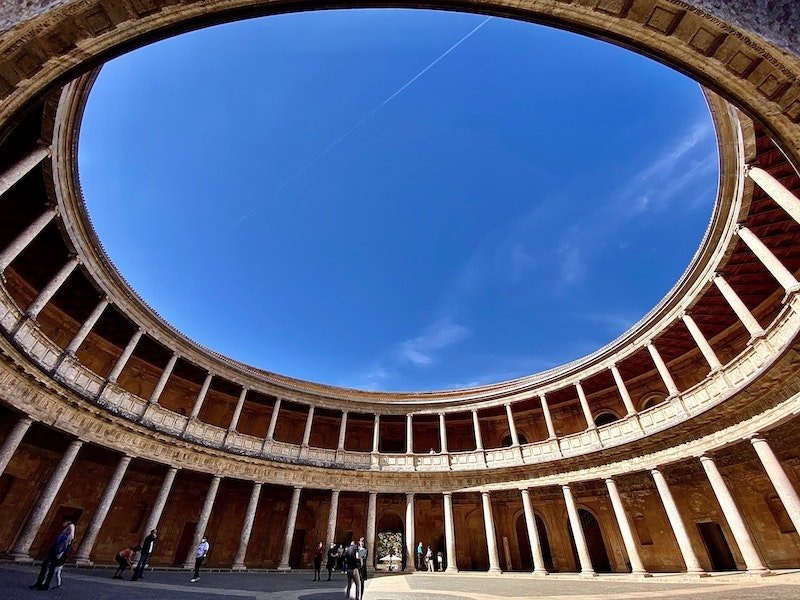
One of the most fascinating aspects of the Alhambra is the use of Arabic calligraphy.
Instead of images of living creatures, which Muslims believe is the work of God, the walls are decorated with poetry and verses from the Qur’an.
The phrase “only God is victorious” is repeated over 9,000 times throughout the palace.
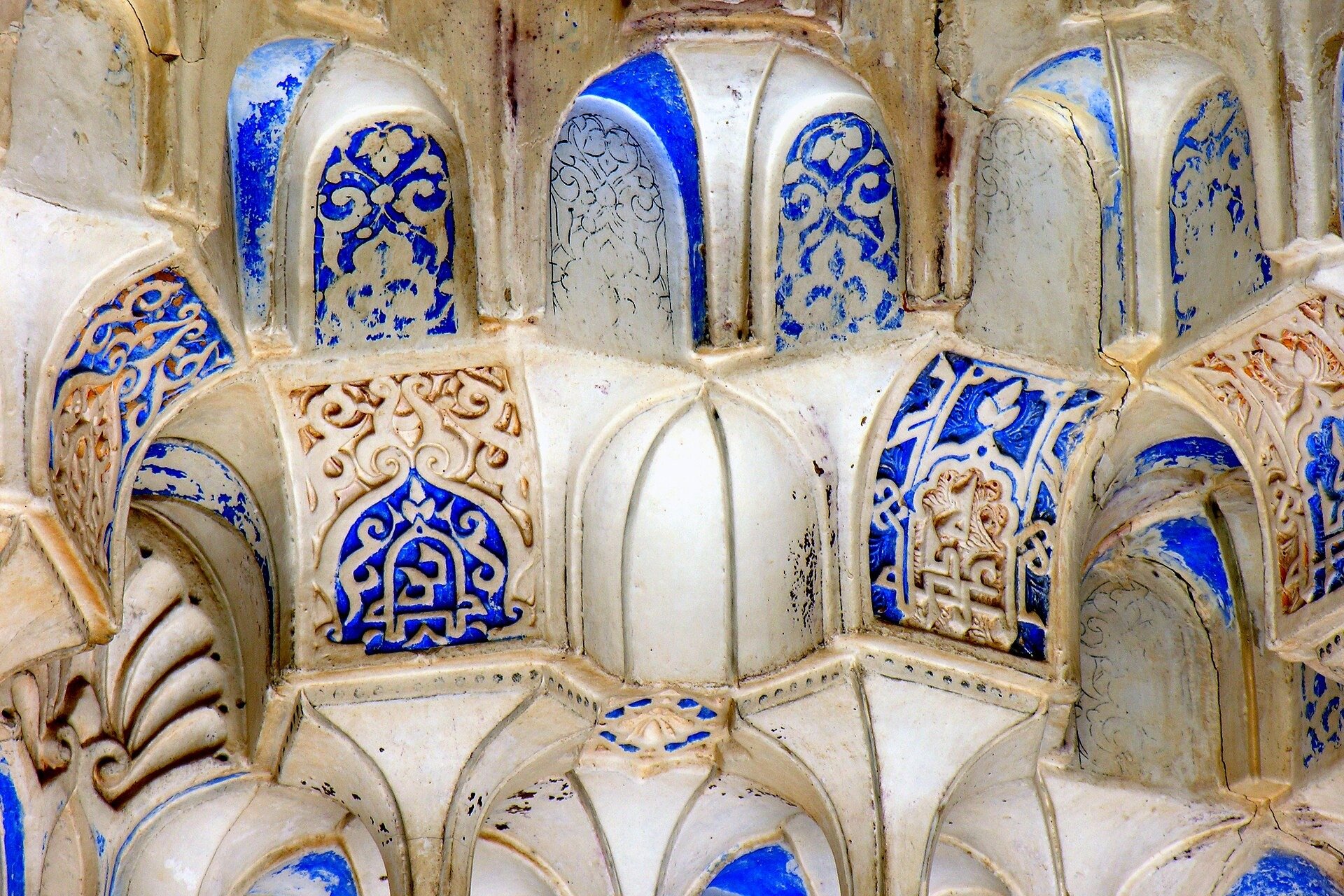
A Struggle Between Muslim and Christian Rulers
The Alhambra’s history tells the story of a constant struggle between Muslim and Christian rulers.
While the Moors built a magnificent palace, the Christians left their own mark after the Reconquista.
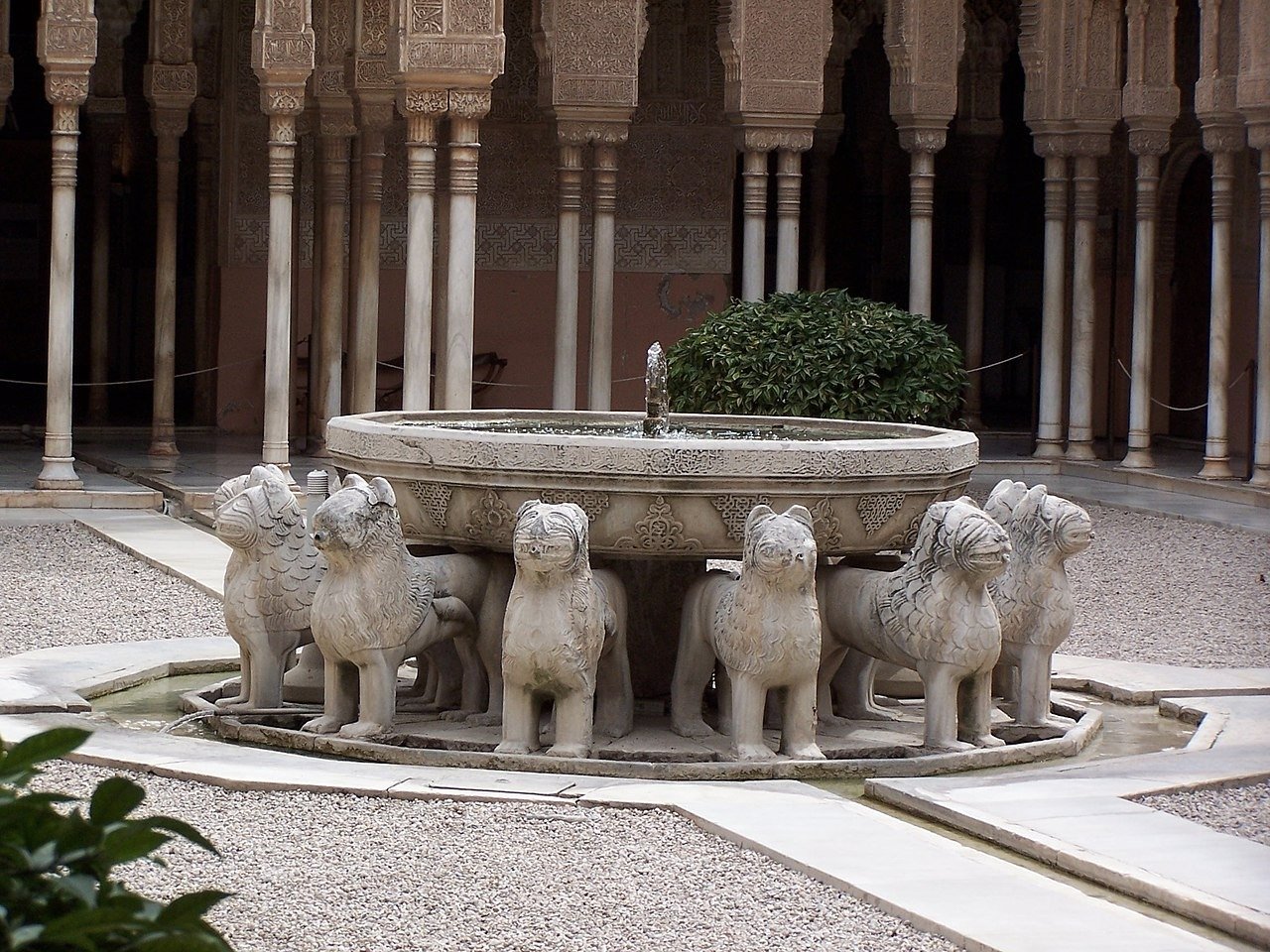
The Palace of Charles V, built after 1492, is an imposing structure that contrasts with the elegance of the Moorish architecture.
It’s a reminder of how conquering civilizations often build on top of their defeated foes’ legacies.
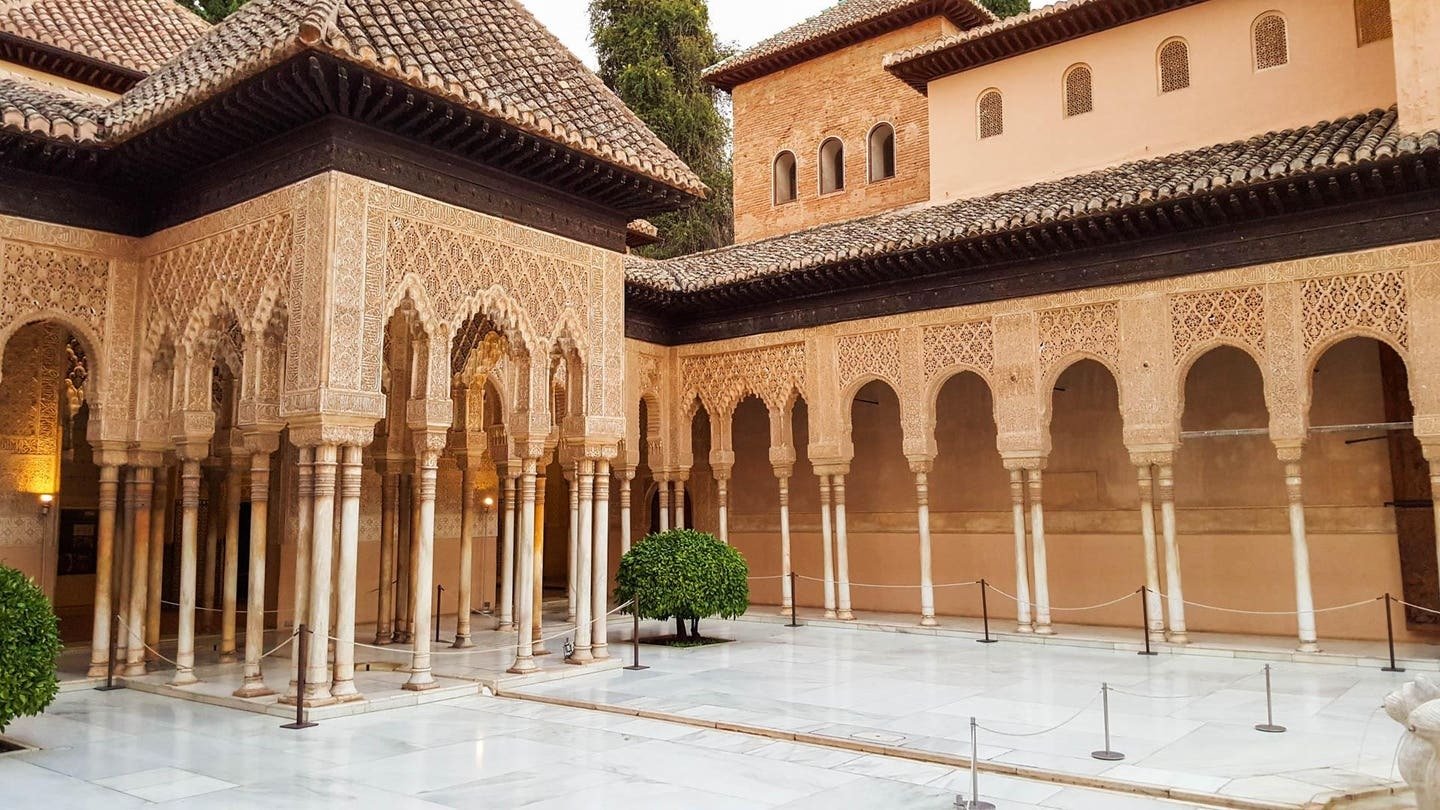
The Alhambra is a must-see attraction, but getting tickets can be tricky.
It’s one of the most popular sights in Spain, and tickets sell out quickly.
If you’re planning to visit, it’s best to book your tickets in advance, as they are often fully booked a month ahead of time.
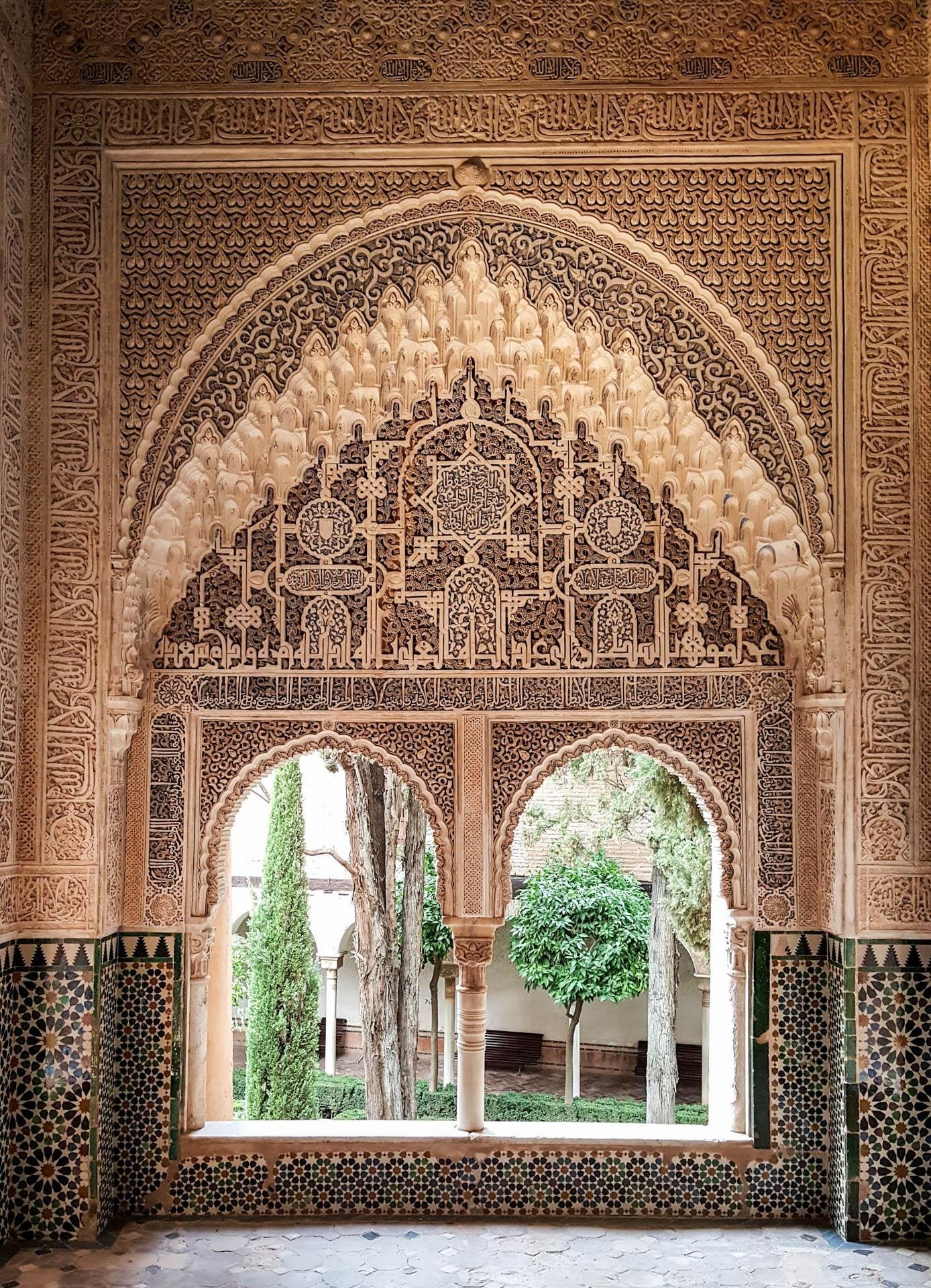
What to See at the Alhambra
When you visit the Alhambra, there are a few key areas you won’t want to miss.
Alcazaba
The Alcazaba, the oldest part of the Alhambra, served as a military fortress.
Climb its towers, and you’ll be rewarded with a panoramic view of Granada and the surrounding mountains.
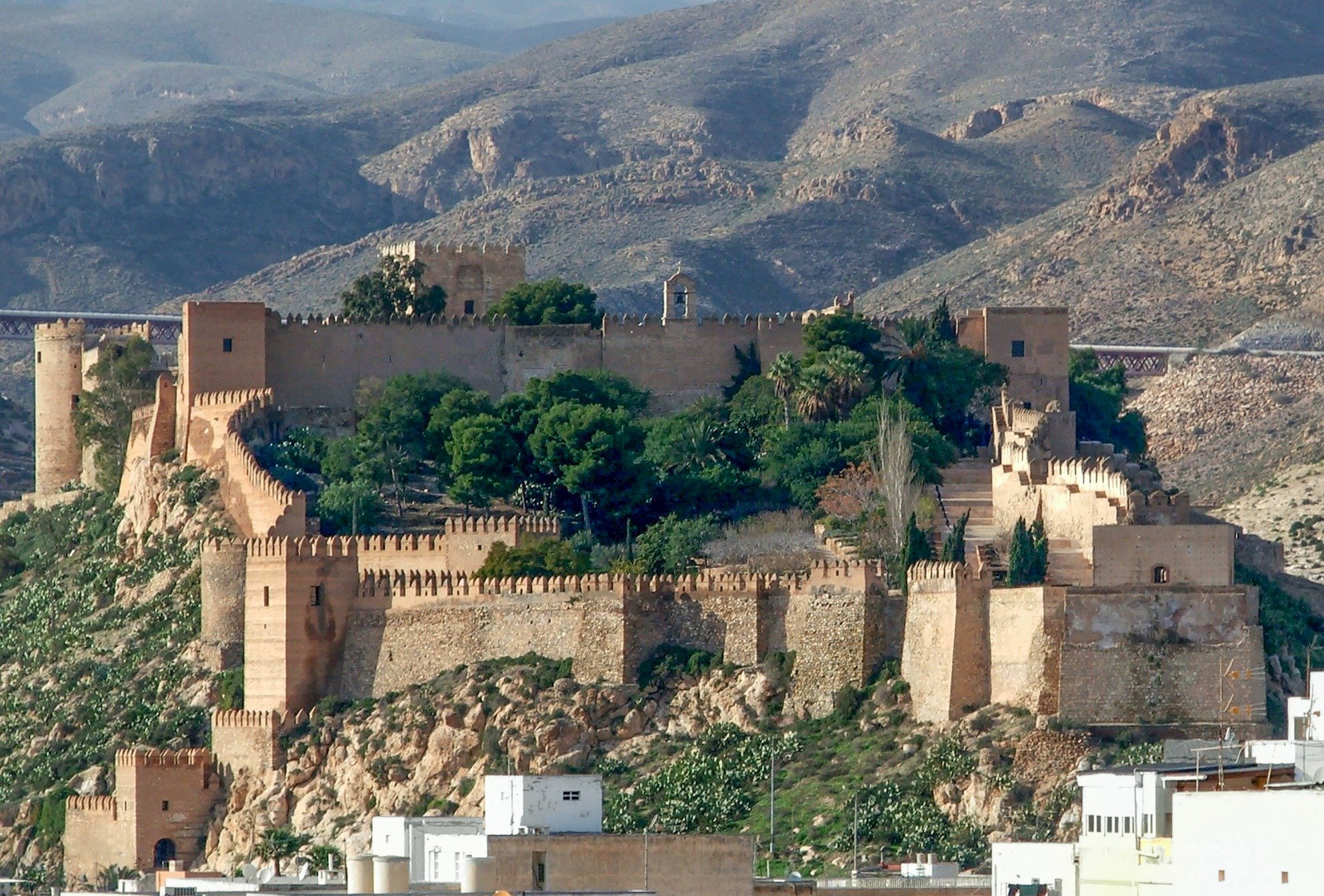
Nasrid Palaces
The Nasrid Palaces are the most stunning part of the Alhambra, featuring beautiful courtyards, intricate tilework, and gorgeous arches.
These palaces were built during the reign of the Nasrid dynasty, which ruled the Emirate of Granada from the 13th to the 15th century.
The Nasrid dynasty was also the last Muslim dynasty in Spain.
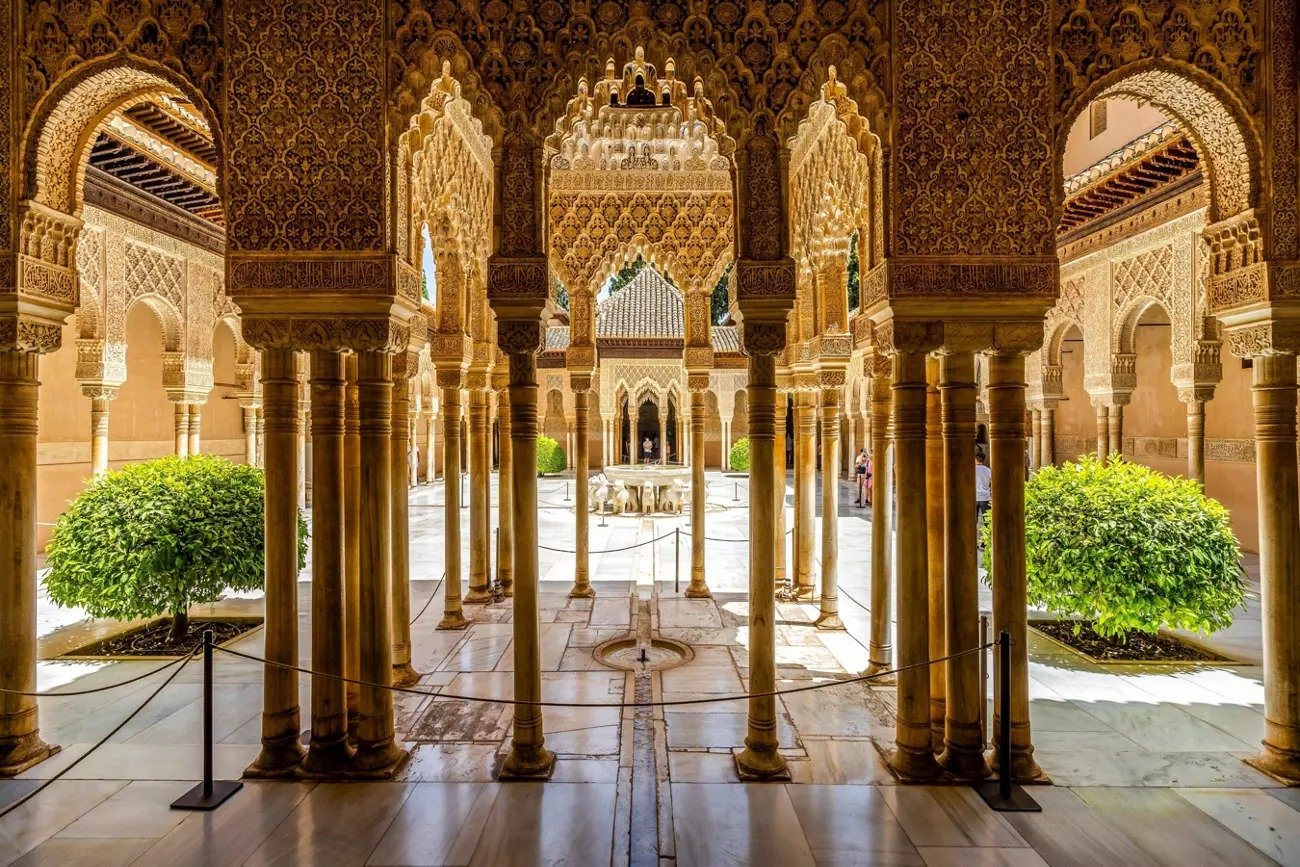
The Nasrid Palaces are made up of three main sections: the Mexuar, the Comares Palace, and the Palace of the Lions.
Each one serves different purposes and showcases intricate design, but together, they form a cohesive masterpiece.
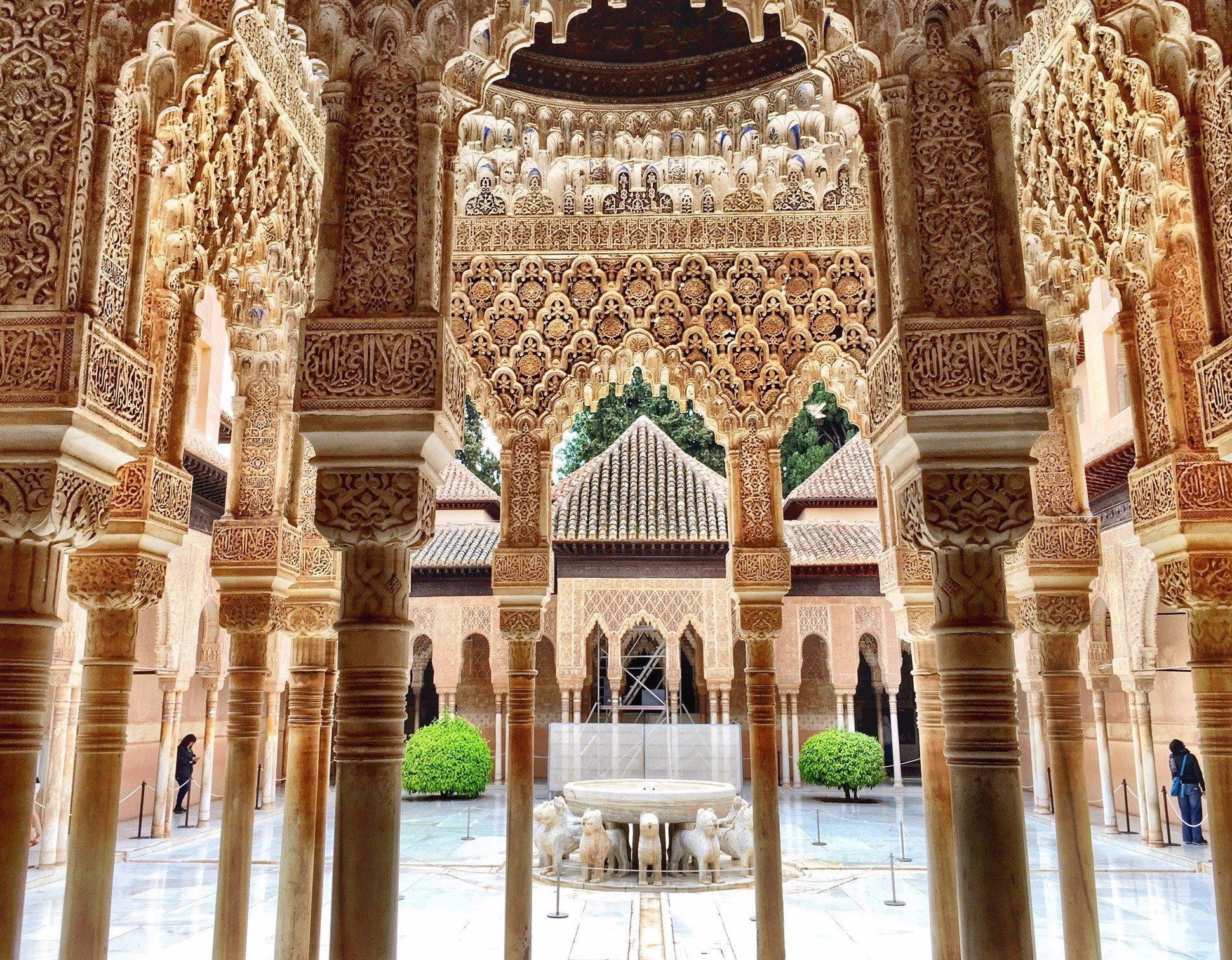
The Mexuar
The Mexuar is the oldest part of the Nasrid Palaces.
It was used for meetings between the sultan and his advisors.
While not as decorative as other areas, it still features beautiful stucco designs and wooden ceilings.
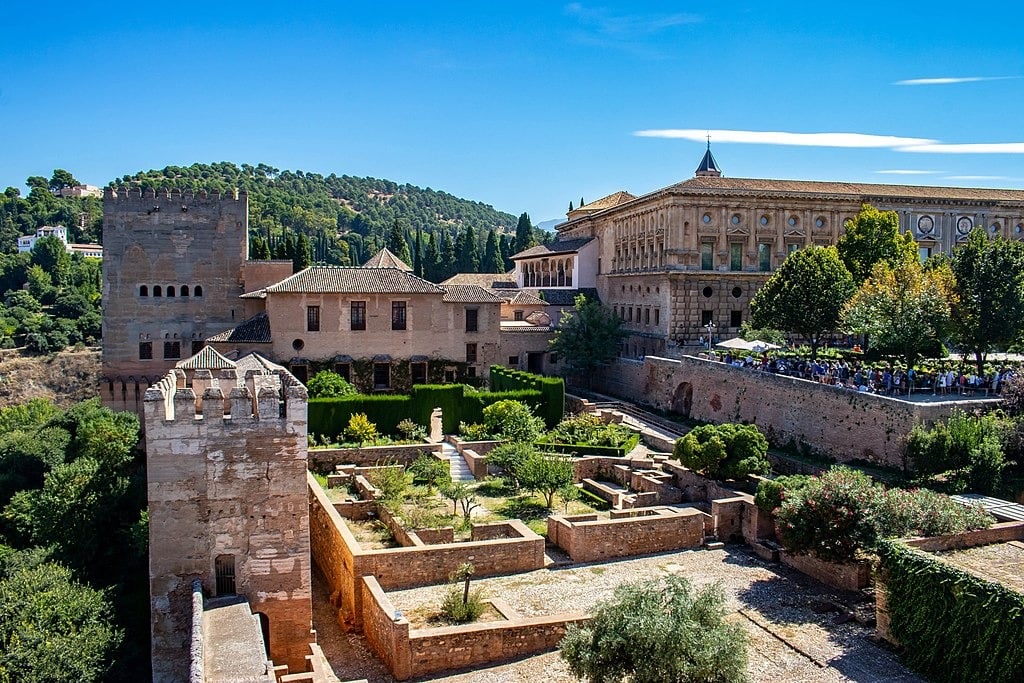
The walls are covered with geometric patterns typical of Islamic design.
There is also a small prayer room here where the sultan and his court could worship.

The Comares Palace
The Comares Palace, also called the Hall of the Ambassadors, was the official home of the sultan.
This palace surrounds the lovely Court of the Myrtles, a peaceful courtyard with a pool and rows of myrtle trees.

The Hall of the Ambassadors is the grandest room in the palace.
It was where the sultan held meetings and ceremonies.
The ceiling is carved with star patterns that represent the heavens, and the walls are covered with intricate stucco work, Arabic calligraphy, and colorful tile mosaics.
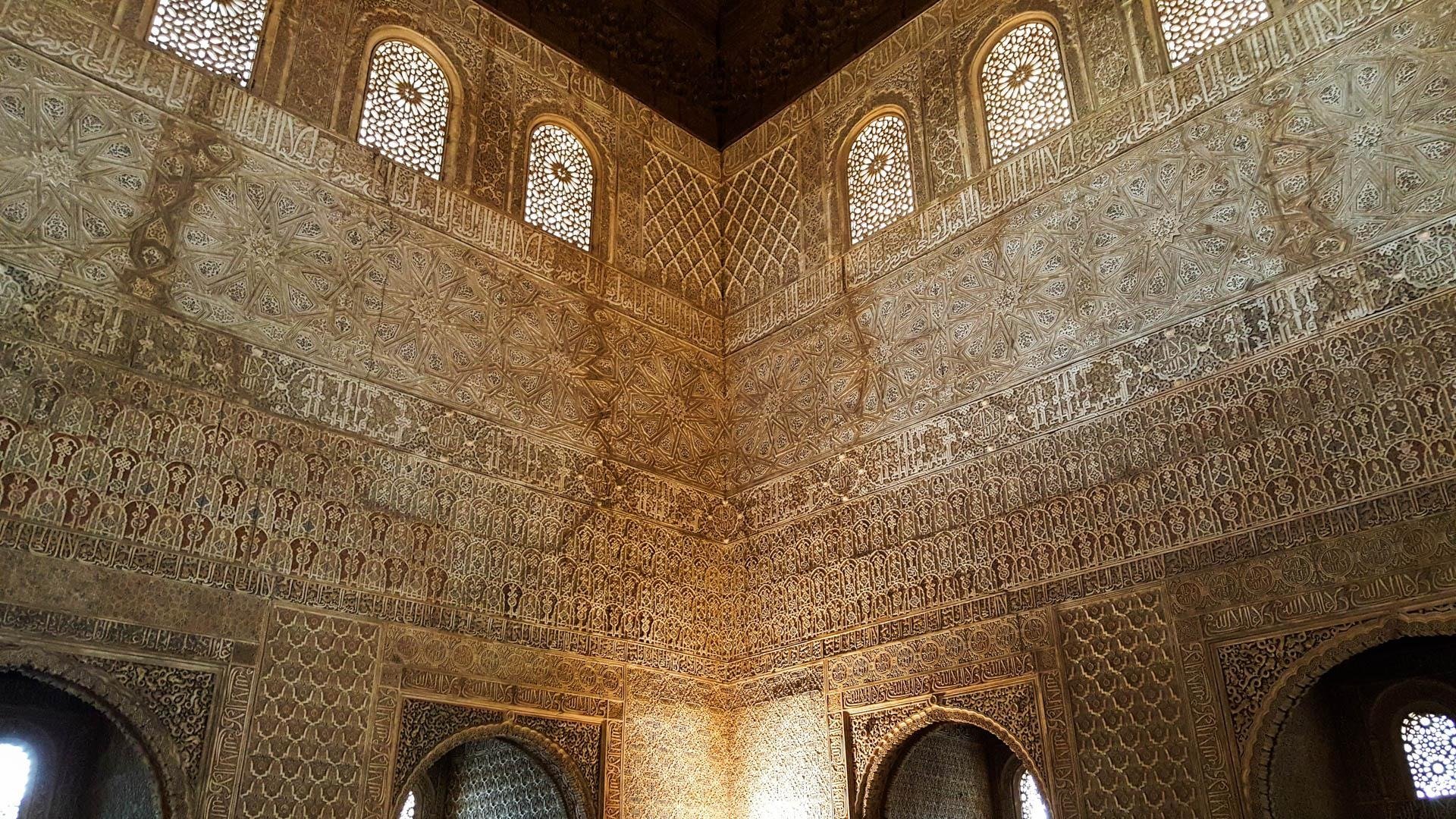
This room is also historically important because it’s where Christopher Columbus is said to have met Queen Isabella and King Ferdinand to discuss his voyage to the New World.
The Palace of the Lions
The Palace of the Lions is perhaps the most famous section of the Nasrid Palaces.
Built by Sultan Muhammad V, it was a private residence for the royal family.
The courtyard, known as the Court of the Lions, features a central fountain surrounded by twelve marble lions, which symbolize strength and protection.
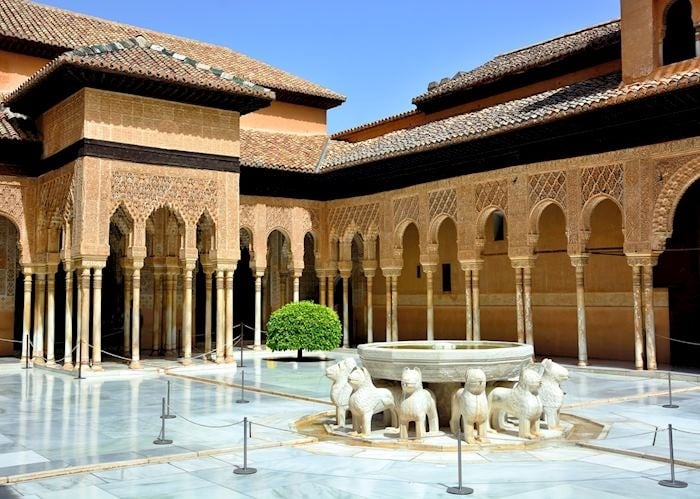
The palace’s main rooms are the Hall of the Two Sisters and the Hall of the Kings.
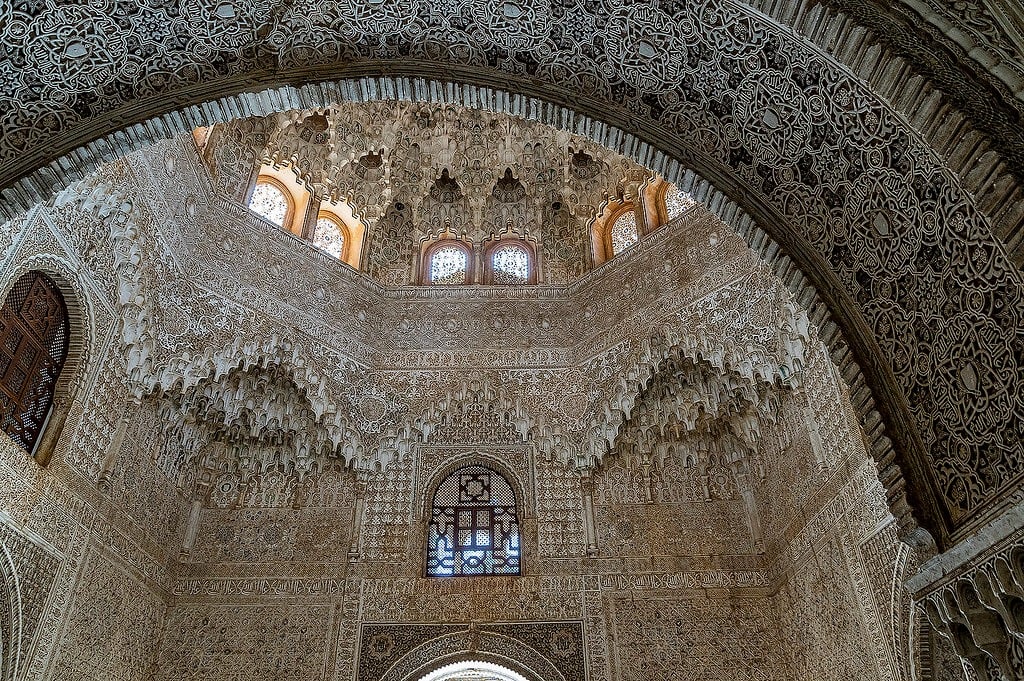
The Hall of the Two Sisters has a stunning ceiling made of muqarnas, a decorative design that looks like a series of honeycombs.

The Hall of the Kings features rare frescoes of court life, which is unusual in Islamic art.
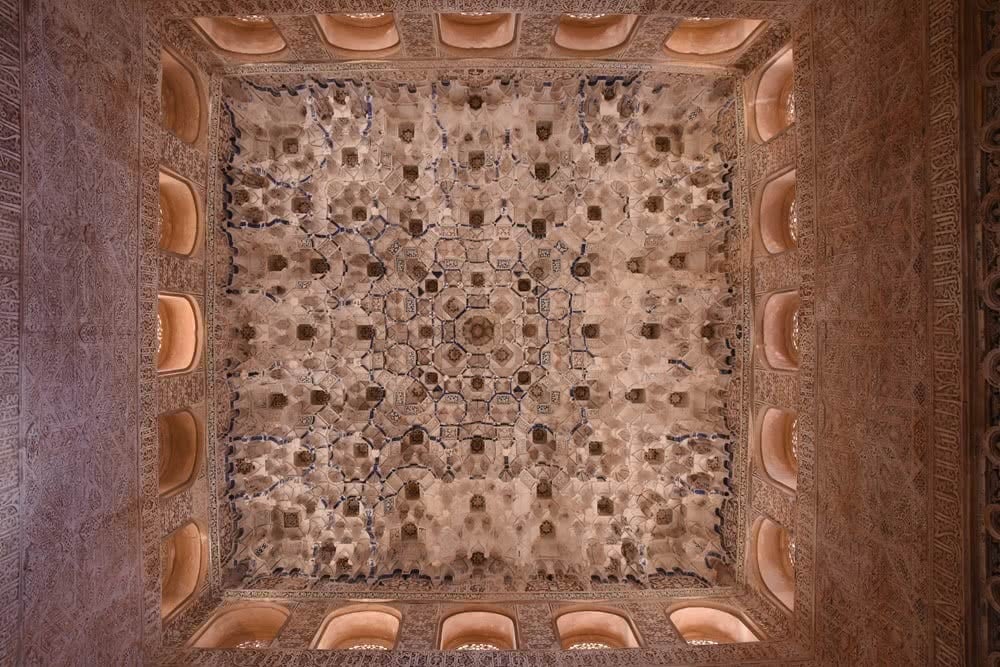
Water and Gardens
Water is an important feature throughout the Nasrid Palaces.
It is present in pools, fountains, and channels, creating a calming and refreshing atmosphere.
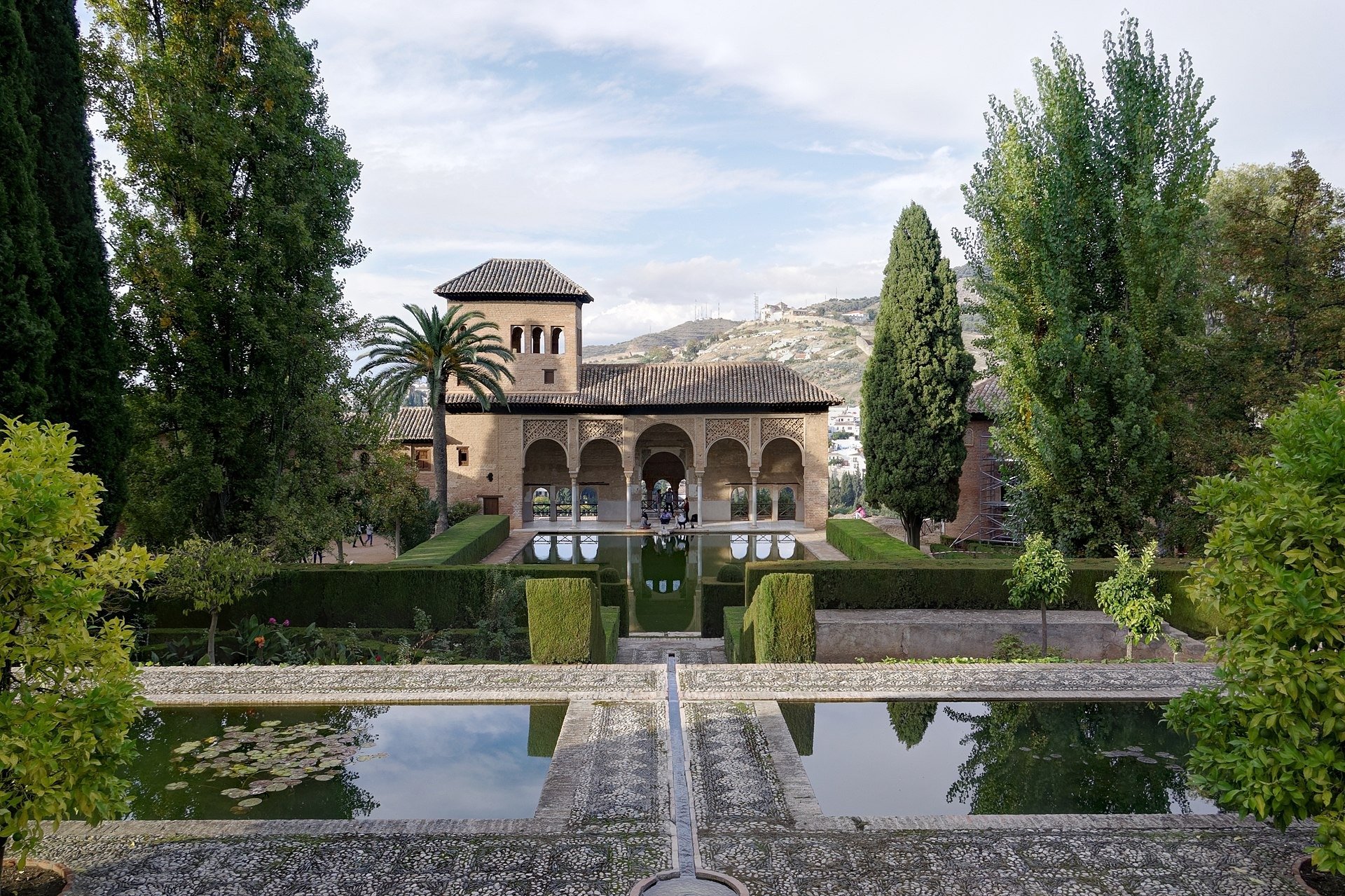
Water was precious in the Moors’ desert homelands, so it held deep symbolic meaning.
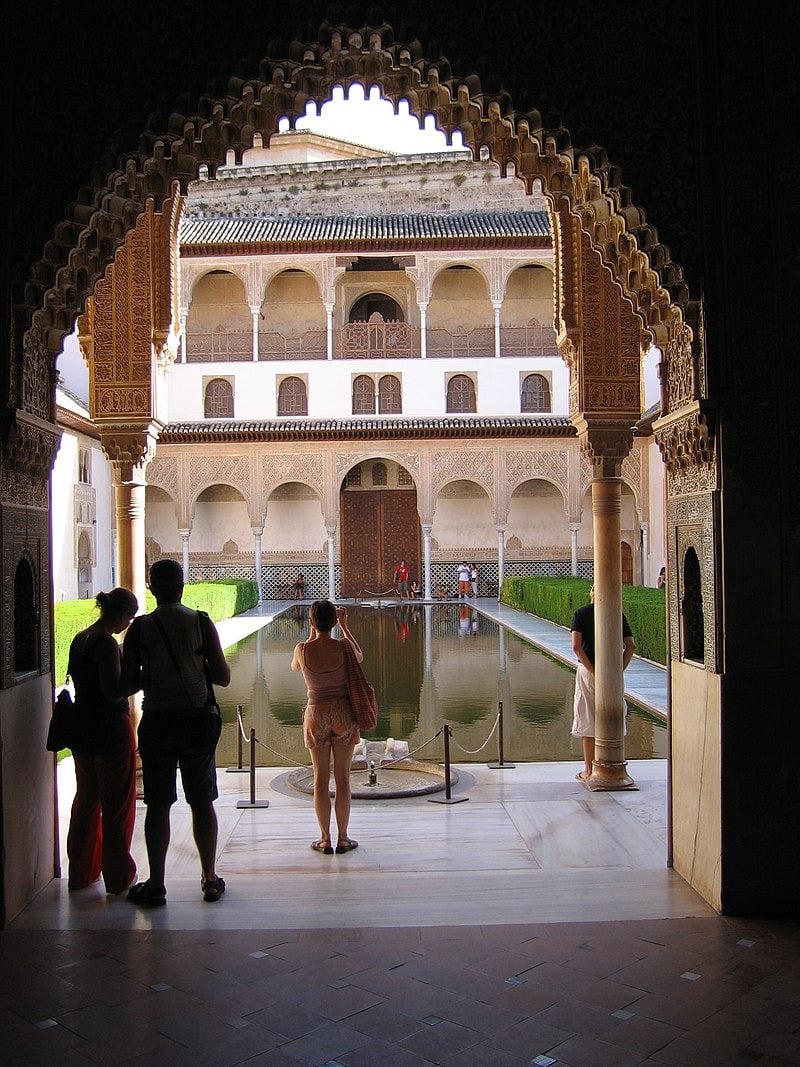
The Generalife Gardens next to the Nasrid Palaces are filled with flowers, hedges, and even more fountains.
This area was a retreat for the royal family.

